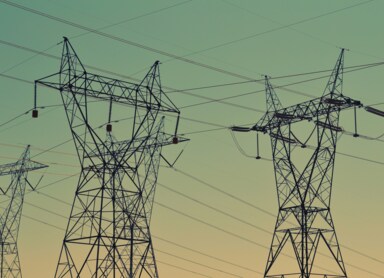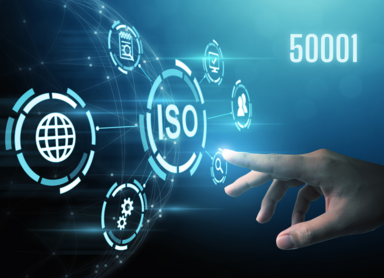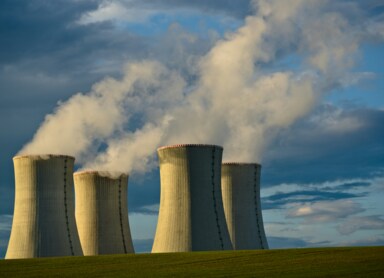Eco-development
What Is a Passive House? Key Principles and Benefits
Passive houses are a symbol of a sustainable approach to construction, considering both human and environmental needs. Thanks to low energy demand and high user comfort, they are gaining increasing recognition worldwide. What exactly is a passive house? What design principles must be followed? What technologies are used in this type of construction? What role does renewable energy play in these buildings? And most importantly—what benefits come from choosing a passive house?
Energy efficiency of heat pumps - what is worth knowing?
Heat pumps are, next to photovoltaics, one of the most popular technologies using renewable energy sources. By transferring thermal energy from the so-called “bottom source” - the ground, air or a body of water - it is possible to heat a building at a much lower cost than using classic CO. However, the energy efficiency of a heat pump can vary depending on a whole range of factors. What affects the efficiency of a heat pump and can this parameter be improved?
Carbon Credits – What Is Their Role in Combating Climate Change?
Mitigating and preventing climate change are goals that require decisive and large-scale action. One of the key elements of the global strategy to reduce greenhouse gas emissions is the Carbon Credit system. It serves as an incentive mechanism that promotes the use of renewable energy and reduces the negative environmental impact of businesses.
EMAS – A Complete Guide to Environmental Certification
Companies and government agencies are increasingly requiring their partners to demonstrate proper care for the environment. Entrepreneurs who want to show they are consciously and responsibly taking the green path—and avoid accusations of greenwashing—may choose to implement the EMAS certification. But what exactly is EMAS and what benefits does it offer?
Electricity – everything you need to know about it
Moc prądu to jedno z kluczowych pojęć w elektroenergetyce i elektronice. Dobrze je znać zarówno prowadząc gospodarstwo domowe, jak i przedsiębiorstwo. Dzięki znajomości tego zagadnienia można zrozumieć, w jaki sposób efektywnie zarządzać zużyciem energii elektrycznej, żeby zarówno urządzenia elektryczne, jak i całe instalacje służyły nam jak najdłużej w pełnej wydajności. Dlaczego moc prądu ma duże znaczenie dla naszej codzienności? Jak przeliczać moc na zużycie prądu? I dlaczego nie tylko inżynierowie powinni wiedzieć z „czym się ją je”? O tym w poniższym artykule.
ISO 50001 Standard. How Does It Improve Energy Efficiency in a Company?
For many companies, the use of a significant amount of energy in daily operations is critical to their business. To ensure that an organization operates in an optimized and highly efficient manner, it should consider adopting one of the standardized management systems. One such system is the ISO 50001 standard. What are its principles, and why is it worth implementing?
How to Implement the ISO 14001 Standard in Your Company? A Practical Guide
ISO 14001 is an international standard that defines a set of requirements necessary to create an effective environmental management system. Its purpose is to support organizations in mitigating their negative impact on the natural environment while helping them maintain operational efficiency. Implementing ISO 14001 is becoming increasingly popular among businesses due to the crucial role that environmental policies play in a company's reputation and competitiveness. It is also a growing requirement from key stakeholders, including investors and consumers.
Nuclear energy – the pros and cons of this form of energy
Energia jądrowa może kojarzyć się z działaniami zbrojnymi, ale znajduje ona zastosowanie również do wielu celów pokojowych. Stosuje się ją w radiomedycynie, przemyśle lotniczym i metalurgicznym, czy wreszcie do zasilania elektrowni atomowych. Całkowity udział energetyki jądrowej w wytwarzaniu energii elektrycznej na świecie w 2021 roku wynosił 10,2%. Przyjrzyjmy się bliżej, jak działa ta technologia. Co to jest energia jądrowa, jak powstaje i czy jest się czego obawiać?
How does the Stop Smog program work and who can receive funding?
The Stop Smog program is financial support for municipalities that engage in thermal modernization projects and their residents. It is intended for centers where the so-called “anti-smog law” is in effect. As of January 1, 2021, it is administered by the Ministry of Climate and Environment in cooperation with the National Fund for Environmental Protection and Water Management.
Climate neutrality – what is it and why is it important?
Climate neutrality is a state in which the amount of greenhouse gases emitted into the atmosphere is fully offset by measures aimed at reducing or absorbing them. In an ideal situation, net emissions are equal to zero. The European Union is striving for climate neutrality, with the ambition of becoming the first continent in the world to achieve this goal. Implementing measures and designing an ecosystem that will enable climate neutrality and greenhouse gas emission reductions are key to slowing down the pace of climate change.
RE100 standard - what are the goals and principles of this global initiative?
The transformation of the global economy toward zero-carbon is an extremely complex process that can be analyzed over decades. However, more and more large companies are joining the RE100 initiative. This is an international program that promotes sourcing energy from RES. What is RE100 and who can join this prestigious group?
Power Outage – What to Do and How to Prepare?
A true blackout happens very rarely, but sometimes even a few hours of power interruption can significantly complicate life. This is especially true for businesses whose smooth operation depends on access to electricity, such as manufacturing plants, banks, or gas stations. When can we talk about a power outage and how can we prepare for it?











